What is Artificial Intelligence? Definition, History, and Key Concepts
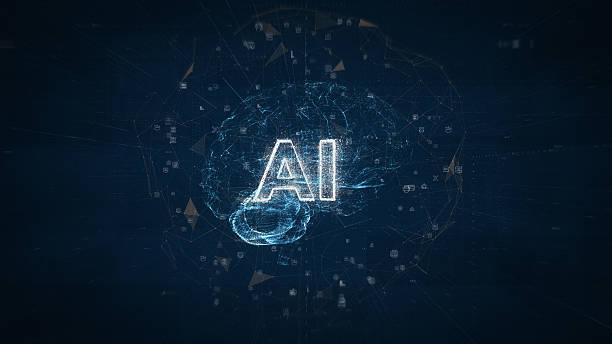
What is Artificial Intelligence? Definition, History, and Key Concepts
#Artificial_Intelligence (AI) is a branch of computer science dedicated to building intelligent machines, especially intelligent computer programs.
The main goal of AI is to develop systems that can perform tasks that usually require human intelligence.
These tasks include learning, reasoning, problem-solving, perception, and natural language.
Wikipedia is a good source for more information on this topic.
The history of artificial intelligence dates back to the 1950s, when researchers began exploring the possibility of building machines that could think.
Alan Turing, a mathematician and computer scientist, was one of the pioneers in this field and proposed the Turing test to evaluate the intelligence of machines.
Over the decades, artificial intelligence has experienced periods of progress and stagnation, but with recent advances in computing power and big data, we are witnessing a renaissance in this field.
Some key concepts in artificial intelligence include:
- Machine Learning Algorithms that allow computers to learn from data without being explicitly programmed.
- Neural Networks Computational models inspired by the structure of the human brain, used for learning complex patterns and relationships.
- Natural Language Processing The ability of computers to understand, interpret, and generate human language.
- Computer Vision The ability of computers to “see” and interpret images and videos.
In summary, artificial intelligence is a broad and dynamic field that is constantly evolving and has great potential to change our lives.
Are you worried about the low conversion rate of your online store and not getting the sales you want?
Rasaweb is your specialized solution for having a successful online store.
✅ Significant increase in conversion rate and sales
✅ Professional and user-friendly design to attract customer satisfaction
⚡ Ready to transform your online sales? Get free consultation!
Types of Artificial Intelligence: Approaches and Applications
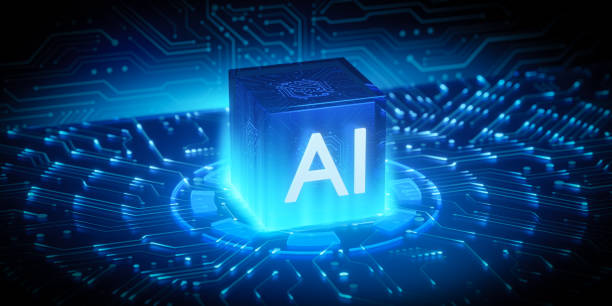
Types of Artificial Intelligence: Approaches and Applications
Artificial intelligence can be categorized based on different capabilities and approaches.
In terms of capabilities, we can refer to these:
- Narrow AI This type of artificial intelligence is designed to perform specific tasks and excels in that area.
Examples include facial recognition systems, search engines, and virtual assistants like Siri and Alexa. - General AI This type of artificial intelligence has the ability to perform any intellectual task that a human can perform.
Currently, general AI does not exist and is still in the research and development stage. - Super AI This type of artificial intelligence surpasses human intelligence and can solve complex problems with greater speed and accuracy.
Super AI is a theoretical concept and has not yet become a reality.
In terms of approaches, we can refer to these:
- Machine Learning This approach is based on algorithms that allow computers to learn from data.
- Deep Learning A subset of machine learning that uses deep neural networks to learn complex patterns and relationships.
- Knowledge-Based Systems This approach is based on using human knowledge to solve problems.
The applications of artificial intelligence are very broad and include various fields.
Some of these applications include:
- Medicine Diagnosing diseases, developing drugs, and improving patient care.
- Finance Predicting the market, detecting fraud, and managing risk.
- Transportation Self-driving cars, traffic management, and route optimization.
- Manufacturing Automating processes, quality control, and optimizing the supply chain.
- Education Personalizing learning, providing automated feedback, and developing intelligent educational tools.
In short, artificial intelligence has different types, each with its own approaches and applications.
With the advancement of technology, it is expected that the applications of artificial intelligence will become broader and more diverse in the future.
Machine Learning Algorithms: Introduction and Review

Machine Learning Algorithms: Introduction and Review
Machine Learning (ML) is the beating heart of many modern #Artificial_Intelligence systems.
Machine learning algorithms allow computers to learn from data without being explicitly programmed.
There are different types of machine learning algorithms, each suitable for a specific type of problem.
Some of the most important machine learning algorithms include:
- Linear Regression This algorithm is used to predict a continuous variable based on one or more independent variables.
- Logistic Regression This algorithm is used to predict a categorical (binary) variable.
- Decision Tree This algorithm creates a tree structure that makes decisions based on different features of the data.
- Support Vector Machine This algorithm tries to find a line or hyperplane in the data space that separates the data in the best possible way.
- Neural Networks This algorithm is inspired by the structure of the human brain and uses multiple layers of nodes (neurons) to learn complex patterns and relationships.
- Clustering This algorithm divides data into different groups based on their similarities.
Each of these algorithms has its own advantages and disadvantages, and choosing the appropriate algorithm depends on the type of data and the problem at hand.
For example, if you want to predict a continuous variable, linear regression may be a good option.
But if you want to divide the data into different groups, clustering can be useful.
In short, machine learning algorithms are powerful tools that can be used to solve various problems in different fields.
By understanding the different types of algorithms and their advantages and disadvantages, you can choose the appropriate algorithm for your problem and achieve better results.
| Algorithm | Type | Application |
|---|---|---|
| Linear Regression | Supervised Learning | Predicting Continuous Variable |
| Logistic Regression | Supervised Learning | Predicting Categorical Variable |
| Decision Tree | Supervised Learning | Decision Making Based on Features |
| K-Means Clustering | Unsupervised Learning | Grouping Data |
| Neural Networks | Deep Learning | Learning Complex Patterns |
Deep Neural Networks: Architectures and Applications

Deep Neural Networks: Architectures and Applications
Deep Neural Networks (DNNs) are a subset of machine learning that use neural networks with multiple layers to learn complex patterns and relationships.
These networks are inspired by the structure of the human brain and are capable of solving complex problems that traditional machine learning algorithms cannot solve.
There are different architectures for deep neural networks, including:
- Feedforward Neural Networks These networks are the simplest type of neural networks, and information flows in one direction from input to output.
- Convolutional Neural Networks These networks are designed for processing images and videos and use convolutional layers to extract features from images.
- Recurrent Neural Networks These networks are designed for processing sequential data such as text and speech and use memory cells to retain information over time.
- Generative Adversarial Networks These networks consist of two neural networks that compete with each other.
One network (the generator) tries to generate new data that resembles the training data, and the other network (the discriminator) tries to distinguish the generated data from the real data.
The applications of deep neural networks are very broad and include various fields.
Some of these applications include:
- Image Recognition Face recognition, object recognition, and image classification.
- Natural Language Processing Machine translation, text generation, and speech recognition.
- Robotics Controlling robots, navigation, and object recognition.
- Medicine Diagnosing diseases, developing drugs, and improving patient care.
In short, deep neural networks are powerful tools that can be used to solve complex problems in different fields.
With the advancement of technology, it is expected that the applications of deep neural networks will become broader and more diverse in the future.
Also, artificial intelligence is emerging as a powerful tool in diagnosing diseases and providing innovative treatment solutions.
Are you disappointed with the low conversion rate of your online store?
Rasaweb, with its professional online store design, is your definitive solution!
✅ Increase your sales and revenue
✅ Exceptional user experience for your customers
⚡ Get a free consultation now!
Natural Language Processing (NLP): Understanding and Generating Language
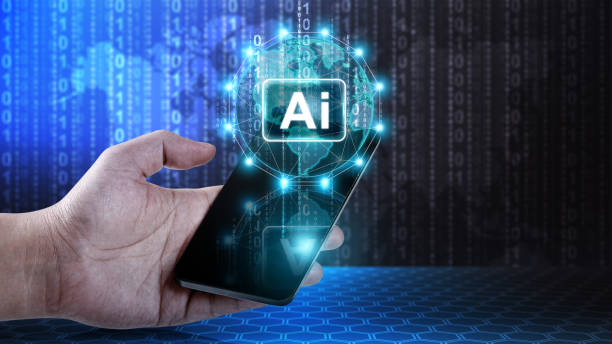
Natural Language Processing (NLP): Understanding and Generating Language
Natural Language Processing (NLP) is a branch of artificial intelligence that enables computers to understand, interpret, and generate human language.
The main goal of NLP is to build systems that can communicate with humans in natural language.
NLP includes two main parts:
- Natural Language Understanding This section enables computers to understand the meaning of text.
- Natural Language Generation This section enables computers to generate new text in natural language.
There are various tasks in NLP, including:
- Parsing Analyzing the grammatical structure of sentences.
- Semantic Analysis Understanding the meaning of sentences.
- Named Entity Recognition Identifying and classifying named entities in the text, such as the names of people, organizations, and places.
- Sentiment Analysis Determining the emotions present in the text.
- Machine Translation Translating text from one language to another.
- Text Summarization Generating a summary of a text.
- Question Answering Answering questions asked about a text.
The applications of NLP are very broad and include various fields.
Some of these applications include:
- Virtual Assistants Siri, Alexa, and Google Assistant.
- Chatbots Bots that can converse with humans in natural language.
- Search Engines Improving the accuracy and relevance of search results.
- Social Media Analysis Analyzing the opinions and emotions of users in social networks.
- Medicine Extracting information from medical records and helping doctors diagnose diseases.
In short, natural language processing is an important field in artificial intelligence that enables computers to understand and generate human language.
With the advancement of technology, it is expected that the applications of NLP will become broader and more diverse in the future.
Computer Vision: Image Processing

Computer Vision: Image Processing
Computer Vision is a branch of artificial intelligence that enables computers to “see” and interpret images and videos.
The main goal of computer vision is to build systems that can extract useful information from images and videos.
There are various tasks in computer vision, including:
- Image Recognition Identifying and classifying objects in an image.
- Object Detection Identifying and locating objects in an image.
- Image Segmentation Dividing an image into different regions based on their features.
- Object Tracking Tracking the movement of an object throughout a video.
- 3D Reconstruction Building a 3D model of a scene based on its images or videos.
The applications of computer vision are very broad and include various fields.
Some of these applications include:
- Self-Driving Cars Recognizing traffic signs, detecting pedestrians and other vehicles.
- Robotics Controlling robots, navigation, and object recognition.
- Medicine Diagnosing diseases, analyzing medical images, and helping doctors diagnose diseases.
- Video Surveillance Detecting suspicious activities and identifying people.
- Augmented Reality Placing virtual objects in the real world.
In short, computer vision is an important field in artificial intelligence that enables computers to see and interpret images and videos.
With the advancement of technology, it is expected that the applications of computer vision will become broader and more diverse in the future.
Reinforcement Learning: Learning Through Reward

Reinforcement Learning: Learning Through Reward
Reinforcement Learning is a type of machine learning in which an agent learns how to act in an environment to maximize a reward.
The agent learns through trial and error and adjusts its strategy based on the feedback it receives.
Reinforcement learning is different from other types of machine learning.
In supervised learning, the agent is trained using labeled data.
In unsupervised learning, the agent tries to find patterns and structures in unlabeled data.
But in reinforcement learning, the agent has no prior data and must learn through interaction with the environment.
There are various algorithms for reinforcement learning, including:
- Q-learning This algorithm learns a Q-function that indicates the value of performing a specific action in a specific state.
- SARSA This algorithm is similar to Q-learning, but instead of using the best possible action, it uses the action that the agent actually performs to update the Q-function.
- Policy Gradient Methods These algorithms directly learn the agent’s policy instead of learning the Q-function.
The applications of reinforcement learning are very broad and include various fields.
Some of these applications include:
- Games Training agents to play video games, such as AlphaGo.
- Robotics Controlling robots, navigation, and learning motor skills.
- Finance Optimizing trading strategies and managing risk.
- Manufacturing Optimizing production processes and quality control.
In short, reinforcement learning is an important field in artificial intelligence that allows agents to learn through trial and error.
With the advancement of technology, it is expected that the applications of reinforcement learning will become broader and more diverse in the future.
| Algorithm | Description | Application |
|---|---|---|
| Q-learning | Learning a Q-function for selecting an action | Games, Robotics |
| SARSA | Updating the Q-function based on the actual action | Robot Control, Navigation |
| Policy Gradient Methods | Directly learning the policy | Complex Games, Strategies |
Ethics and Accountability in Artificial Intelligence

Ethics and Accountability in Artificial Intelligence
With the increasing use of #Artificial_Intelligence in various fields, ethical and accountability issues related to it are becoming more important.
Artificial intelligence can have profound effects on society, and its development and use must be carried out with consideration of ethical principles and accountability.
Some of the important ethical issues in artificial intelligence include:
- Bias Artificial intelligence algorithms can be discriminatory if they are trained with discriminatory data.
- Transparency Decisions made by artificial intelligence algorithms must be explainable.
- Privacy The collection and use of personal data must be done with respect for people’s privacy.
- Accountability It must be clear who is responsible for the consequences of decisions made by artificial intelligence algorithms.
- Employment Artificial intelligence can lead to job losses, and planning is needed for this issue.
To address these ethical issues, it is necessary to take actions, including:
- Developing Ethical Frameworks Developing ethical principles and guidelines for the development and use of artificial intelligence.
- Education and Awareness Raising public awareness about ethical issues related to artificial intelligence.
- Monitoring and Evaluation Monitoring the development and use of artificial intelligence and evaluating its impact on society.
- International Cooperation Cooperation between countries to solve ethical issues related to artificial intelligence.
In short, ethics and accountability in artificial intelligence are of great importance, and its development and use must be carried out with consideration of these issues.
By adhering to ethical principles and accountability, we can benefit from the advantages of artificial intelligence and prevent its risks.
Also, the Center for AI Ethics is a great resource for more information in this area.
Research shows that 80% of customers trust companies with professional websites more. Does your current website inspire this trust?
With Rasaweb’s corporate website design services, solve the problem of customer distrust and weak online image forever!
✅ Create a professional image and increase customer trust
✅ Attract more sales leads and grow your business
⚡ Get free consultation
The Future of Artificial Intelligence: Prospects and Possibilities
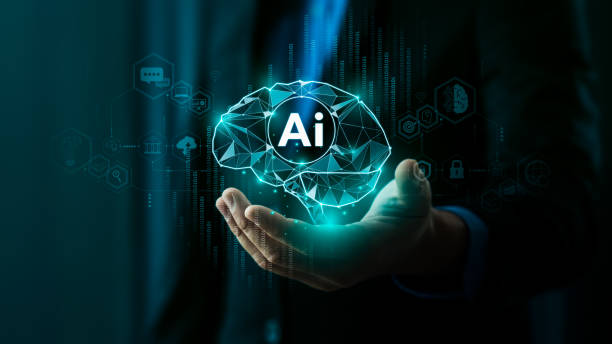
The Future of Artificial Intelligence: Prospects and Possibilities
Artificial intelligence is currently transforming, and it is predicted that it will have a more profound impact on society in the future.
With the advancement of technology, artificial intelligence will be able to perform more complex tasks and play a more prominent role in various areas of our lives.
Some of the future prospects of artificial intelligence include:
- Artificial General Intelligence (AGI) Developing artificial intelligence that is capable of performing any intellectual task that a human can perform.
- Self-Driving Cars Expanding the use of self-driving cars and changing the shape of transportation.
- Personalized Medicine Using artificial intelligence to diagnose and treat diseases based on the individual characteristics of each patient.
- Personalized Education Using artificial intelligence to provide education tailored to the needs of each student.
- Process Automation Automating many manual and repetitive processes.
There are many possibilities regarding the future of artificial intelligence, including:
- Artificial intelligence can help solve global problems Artificial intelligence can be used to solve problems such as climate change, hunger, and poverty.
- Artificial intelligence can make our lives easier Artificial intelligence can make many of our daily tasks easier, such as online shopping, travel planning, and financial management.
- Artificial intelligence can create risks Artificial intelligence can lead to job losses, discrimination, and privacy violations.
- Artificial intelligence can become an existential threat to humans Some people are concerned that artificial intelligence could get out of control and become an existential threat to humans.
In short, the future of artificial intelligence is full of possibilities and can have a profound impact on society.
It is necessary to develop and use artificial intelligence with care and responsibility in order to benefit from its advantages and prevent its risks.
Artificial intelligence is the key to solving many global challenges and improving the standard of living for people around the world.
Resources and Tools for Learning Artificial Intelligence
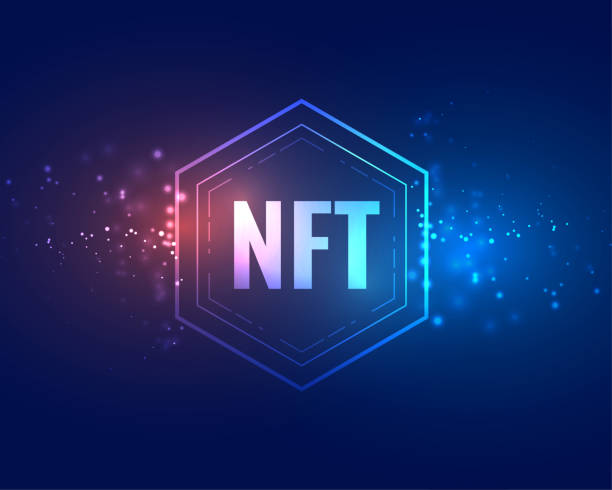
Resources and Tools for Learning Artificial Intelligence
Learning #Artificial_Intelligence can be an exciting and rewarding journey, but it requires the right resources and tools.
Fortunately, there are many resources available today for learning artificial intelligence, including online courses, books, articles, practical projects, and online communities.
Some popular online resources for learning artificial intelligence include:
- Coursera Offers various courses in the field of artificial intelligence, including specialized courses and introductory courses.
- edX Offers similar courses and collaborates with reputable universities.
- Udacity Offers specialized nanodegrees in the field of artificial intelligence.
- Khan Academy Offers free lessons in mathematics, statistics, and computer science.
- YouTube There are many channels that offer free tutorials in the field of artificial intelligence.
Some popular books for learning artificial intelligence include:
- Artificial Intelligence A Modern Approach by Stuart Russell and Peter Norvig.
- Deep Learning by Ian Goodfellow, Yoshua Bengio, and Aaron Courville.
- Hands-On Machine Learning with Scikit-Learn, Keras & TensorFlow by Aurélien Géron.
Some popular tools for developing artificial intelligence include:
- Python is a popular programming language for developing artificial intelligence.
- TensorFlow is an open-source machine learning framework developed by Google.
- Keras is a high-level API for TensorFlow that makes it easier to develop machine learning models.
- PyTorch is an open-source machine learning framework developed by Facebook.
- Scikit-learn is a machine learning library for Python that includes various algorithms for machine learning.
In short, there are many resources and tools available for learning artificial intelligence.
Using these resources and tools, you can acquire the knowledge and skills necessary to develop artificial intelligence systems.
Also, by joining online communities and participating in practical projects, you can connect with other artificial intelligence enthusiasts and benefit from their experiences.
Frequently Asked Questions
| Question | Answer |
|---|---|
| What is Artificial Intelligence? | It is a simulation of human intelligence in machines programmed to think like humans and mimic their actions. |
| What are the main branches of Artificial Intelligence? | They include Machine Learning, Deep Learning, Natural Language Processing, Computer Vision, and Robotics. |
| What is Machine Learning (ML)? | It is a branch of artificial intelligence that focuses on enabling systems to learn from data and identify patterns without explicit programming. |
| Mention examples of Artificial Intelligence applications in our daily lives. | Voice assistants (such as Siri and Alexa), recommendation systems in Netflix and Amazon, self-driving cars, and facial recognition programs. |
| What is Deep Learning? | It is a subset of machine learning that uses artificial neural networks with multiple layers (deep) to process large amounts of data. |
| What is Natural Language Processing (NLP)? | It is a branch of artificial intelligence that focuses on enabling computers to understand, interpret, and generate human language. |
| What are some ethical concerns related to Artificial Intelligence? | They include bias in data, privacy, job loss, and responsibility in case of errors. |
| What are the main benefits of Artificial Intelligence? | Increased efficiency, improved decision-making, automation of repetitive tasks, and discovery of complex patterns in data. |
| How is Artificial Intelligence used in the field of healthcare? | In diagnosing diseases, discovering drugs, analyzing medical images, and providing personal care for patients. |
| How do you see the future of Artificial Intelligence? | It is expected to continue to evolve at a rapid pace, affecting all aspects of human life, from industry to education and entertainment. |
And other Rasaweb advertising agency services in the field of advertising
Intelligent digital advertising: Transform your click-through rate with the help of Google Ads management.
Intelligent sales automation: An effective tool to increase click-through rate with the help of attractive user interface design.
Intelligent sales automation: A professional solution for digital branding with a focus on intelligent data analysis.
Intelligent advertising campaign: A novel service to increase digital branding by optimizing key pages.
Intelligent conversion rate optimization: A professional solution for attracting customers with a focus on accurate target audience targeting.
And more than a hundred other services in the field of internet advertising, advertising consulting and organizational solutions
Internet Advertising | Advertising Strategy | Advertorial
? Are you looking for significant growth in your business in the digital world? Rasaweb Digital Marketing Agency, with its expertise in SEO, targeted advertising, and secure website design and professional, paves the way for your success.
📍 Tehran, Mirdamad Street, next to the Central Bank, South Kazerun Alley, Ramin Alley, No. 6
Resources
Artificial Intelligence – Topic Overview
What is Artificial Intelligence? In simple terms
What is Artificial Intelligence?
Artificial Intelligence – Wikipedia



